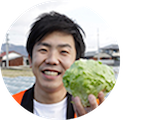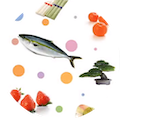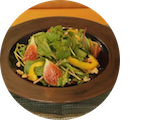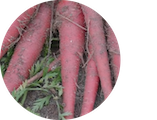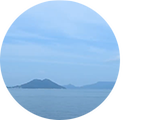
Shikoku Sacred Ground where Owls Come
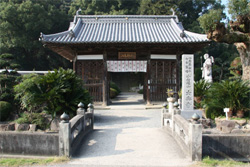
Mitoyo City in the western part of Kagawa Prefecture. As the name implies, the city is blessed with vegetables, fruits and rich fruits. At the southern end of the city are Yamamoto and Saida. First, start from Yamamotocho, about 10 minutes southwest by car from Sanuki Toyonaka Interchange. The Yamamotocho area is home to the Shidagawa River and Sakase Pond, one of Sanuki's hundred scenic spots, and many historical shrines and temples. Here is also the Daikoji Temple, the 67th place of Shikoku Sacred Ground. Komatsuoyama Daikoji Temple is an ancient temple that was built approximately 14 km northwest of its current location as the last temple of Todaiji Temple in Tenpyo 742 (XNUMX). It is located at the foot of Mt. Komatsuo, which overlooks the green fields, and there are large trees of Kaya and Kusu, which are said to be hand-planted by Kobo Daishi, and it is known that owls nest in the spring. The statue of the Kongo wrestler greeted at the entrance to the approach to the shrine was said to have been created by Unkei in the early Kamakura period, and was described as the oldest and largest Niou in Shikoku.
Nitten artists and traditional craftsmen
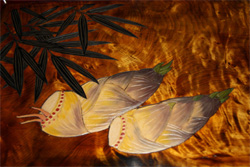
Near the signboard to Daiko-ji Temple along National Route 377, there is the residence of Kisao Nishioka, a traditional craftsman of Kagawa Lacquerware. Nishioka sensei sometimes holds an exhibition at home. I visited to talk about Kagawa lacquer ware. Nishioka's starting point was in 22, when he was a disciple of Taizan Fujiwara, the writer of Sanuki Carving, when he was just 16 years old. For more than 63 years, he has come to the world of lacquer ware. The first thing I learned was Sanuki carving, in which the carved sword was used to carve the high and low parts, and then the lacquer was applied several times to make the pattern stand out with colored lacquer. After that, at the Nitten, I was impressed by seeing the work of Choshitsu and studied under Kodo Otomaru, a living national treasure. This "carved lacquer" means that the lacquer is applied over and over again, the surface is carved with a chisel, and a pattern is drawn. Depending on the depth of the digging, advanced techniques are required to show the color of the buried lacquer. Therefore, the work has a fantastic beauty that can not be said. Mr. Nishioka has been selected for Nitten many times using this technique of “carved lacquer”. We continue to make stunning works that exceed Japanese paintings. In addition, there are many fans for the attractive trays and tea utensils of “Sanuki Carving”. Mr. Kisao Nishioka has two faces, a Nitten artist and a traditional craftsman. In the future, you mentioned that you want to keep making warm works as you wish.
Sparkling
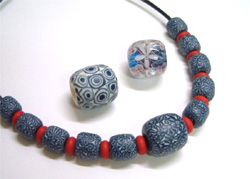
From the signboard of Daikoji Temple, go east along National Route 377 (towards Takamatsu). There is a signboard, and if you go to the right, there is a workshop of "Ninomiya-to". Here, various works such as beautiful tonbo balls, decorative glass, mirrors, clocks and lamps are produced. One of the most popular products is the baby's handprint footprint glass plate, which is made of transparent glass with sculptures of the baby's handprints. It is also recommended for giving birth commemorations and celebrations or as a cute interior. In addition, delicate techniques shine on small glass balls, and "Tombobotama" is a popular item throughout Japan as a delicious and unique accessory. Currently, exhibitions are held in various places, mainly in department stores in Tokyo. In addition, we hold "Tombo ball experience class" and "Etching glass experience class" by reservation. Why don't you try creating an original work?
In the southeast of "Ninomiya-to", there is "Yakuo-ji" which is famous as a button temple, and in the northwest is Sugo Shrine. The shrine is a natural monument designated by the country. Is also done.
Art foundry
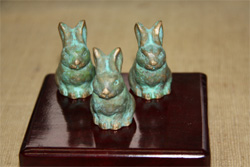
An original bronze statue factory and an original foundry are located on the northwest side of Sugo Shrine. Founded during the Gyeong'an era (1648-1651), it inherits the tradition of granting a letter of edict from the Imperial Court. In the past, castings were so popular here that they were called the founder Tsuji, and many craftsmen lived there. Starting with pots and kettles, he made many cannons at the end of the Tokugawa period and many bells in the Meiji era, and in the end he mainly made bronze statues, and now also makes a variety of accessories that can be used as interior goods and souvenirs. When I showed you inside the factory, the prototypes for the statues were lined up narrowly. Buddha statues, celebrities, animal types, Ryoma Sakamoto and the Akiyama Brothers of the Cloud on the Hill, both of which are the hot topics of the day, local greats such as Okubo Takanojo who advocated Seto Ohashi, former Prime Minister Masayoshi Ohira, and Kobo Daishi I was able to continue making. On the shelves at the storefront, there are small items shining with techniques such as "Kanei Treasure" inspired by Kanonji's sand painting, rabbit figurines inspired by the zodiac signs, and lovely beckoning cats. Here, all processes such as prototype, casting and coloring can be performed consistently, so we can respond to any orders. The original copper sculpture factory and the original foundry are one of the few art foundries in Japan that convey valuable skills.
Sanuki Wagyu Beef Store
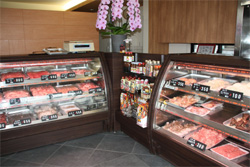
To the east of the Hara Foundry, along the prefectural road Route 5 (Kannonji Ikeda Line), there is a specialty shop for Sanuki Wagyu beef Yoshida. This is a butcher shop opened about 50 years ago. Reopened about 3 years ago. At the store, you will find not only Sanuki Kuroge Wagyu, which is a specialty of Kagawa Prefecture, but also Kuroge Wagyu beef hamburgers, handmade minced cutlets, and domestic pork loin cutlets.
Finest Japanese Black Beef
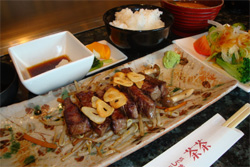
Adjacent to that is steak, shabu-shabu, and sukiyaki “cha-cha”. It has been 14 years since the store opened, but it has been undergoing renovations one after another, and it is a stylish and sophisticated store that looks like a new building. The marble counter in the shop is also wonderful. A cozy shop is made by architectural friends. The predecessor of this restaurant was a yakiniku restaurant on the second floor of a butcher shop. The owner himself wanted to take over the butcher shop, but now that the land is available, he has decided to open a shop using his knowledge of steak and grilled meat. With the power of a family familiar with meat, you can taste really delicious meat. This is a shop that handles Sanuki Wagyu beef, which is one of the Sanuki Sanchu Cooperation Stores. The next store is a Sanuki Wagyu specialty store, but it is actually difficult to get. So, I buy cattle directly from Toyonaka. Under such circumstances, he said that he was not focusing on 2% Sanuki beef, but on selected domestic Japanese beef. Of course, I want to use high-quality products from Kagawa Prefecture, so I prefer to use local foods, including garlic and vegetables. For that reason, salads are also fresh and delicious, and easy lunchtime is crowded with many people. At night, you can taste the finest Kuroge Wagyu beef, which is popular among families and groups. (The photo shows Kuroge Wagyu beef on the Family Course.)
Onishi Pattern Works
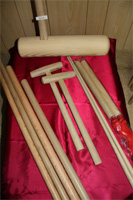
From "Chacha", take prefectural road No. 5 toward Saita and turn left at the Nagase intersection where it crosses with National Route 377. There is "Onishi Pattern Works" along the national road near the table mark factory. In the old farming work, everything was done manually. I worked in fields with plows, hoees, and local locals such as jawren and Tonga. It is this factory that produces the "pattern" of the tree. In addition, they make pestle for making rice cakes, drums and gongs for festivals, sticks for sticks, and sticks that are indispensable for Sanuki udon. Also, there are many orders for thick rolling pins for soba noodles. Recently, imports from China are overwhelmingly large, but Onishi-san's products, which are carefully made by hand, have different tastes and lids. First of all, we use only domestically produced oak or muk trees. It is completely different from external materials in terms of stickiness, so it is hard and firm, so it will hardly bend or crack later. For example, in the case of a rolling pin, it is not possible to make a uniform dough that bends, and it is not possible to beat delicious noodles. That's where Onishi-san's rolling pin, which can't bend, was pulled. Rolling pin is made by naturally drying domestically produced oak squares over a year. It is steamed to correct the bend and carefully cut by hand. Finished with paper twice. I thought this was a difficult process, but around the time of its founding in 2, it was a time when wood was carved in Kanna. The effort was even more difficult. There are also orders to use thin udon noodles for health exercises. It is a rolling pin of two birds with one stone. Masafumi Onishi, Onishi Pattern Manufacturing Works, who also won the Mitoyo City Manufacturing Award in 34.
XNUMX days a week
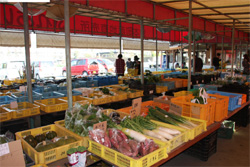
The Yamamoto Fureai City is located only along Wednesday and Saturday and Sunday along National Route 377. Elongated outdoor tents with flowers, fresh vegetables and fruits. Inside the building, there are lots of delicious items such as processed goods such as canned foods and jams, side dishes, and handmade sweets. Also, local crafts are displayed. Business hours are from 7:17 to XNUMX:XNUMX. Customers are coming more and more as soon as the store opens, so let's take a look early on Wednesday, Saturday and Sunday.
There is a treasure field
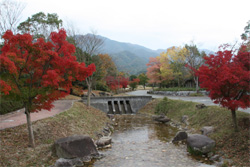
Return to Prefectural Road No. 5 and head to Saita-cho, Mitoyo-shi, and you will soon see the sign for "Kagawa Irrigation Memorial Park". Kagawa Irrigation Memorial Park is a memorial park where you can experience and learn about the history and benefits of Kagawa Irrigation, which supports agriculture and living in Kagawa. The water of the Yoshino River passes through the Asan Tunnel and is located at the east-west branch where the water surface is first seen, and the vast site is recommended for strolling.
Take prefectural road 5 again toward Ikeda, turn left at the first traffic light, and you will see "Ishana" on the left side of the road. This temple is said to be the origin of Prince Shotoku and is known as a temple for giving birth and giving children. In the old days, it prospered as a prayer place for rainfall in the Marugame Domain.
Open a health cafe
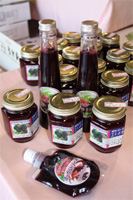
At the end of "Ina-Na-in", there is an open space for talking to the earth. This is the activity base of the “Talk with the Earth,” which was established in 2004. Mr. Hiromi Tada, the chairman, came to live here and wanted to do more usefully after experiencing the chairman of the woman. He first made EM blurring and worked on environmental purification. As a result, we thought that agriculture is a life-speaking life and raised safe agricultural products by natural farming without pesticides, and shipped them to roadside stations, facilities for the disabled, and welfare cooperatives. The plaza was completed in the spring of 2006 as a place to make jam with the proud fruits. At that time, he had been working in the field during the day, and had been making jams until 1 or 2 am. Eventually, we wanted to produce healthier foods, so we began cultivating rare Boysenberries in Japan. Roissy Rubus genus Boysenberry is rich in anthocyanins, which have strong antioxidant properties, as well as folic acid, ellagic acid, dietary fiber, and minerals, improving blood circulation, preventing menopause, and preventing aging. It has been proven from various data that there are plenty of health-promoting ingredients such as anti-carcinogenic effects (see the pamphlet of the association talking with the earth). In 2010, a group of boysenberry growers was set up with some 20 members, and now they produce fruit juice, yogurt sauce and jam and ship them to roadside stations and other places. Then, in December 2010, a health café was opened with the theme of healthy and peaceful. Menus such as bagels using healthy juices and boysenberry jam, fresh vegetables, freshly picked strawberries, and specialty jam products are prepared to hope for healing and health of visitors. It is located in a beautiful place close to the Shida Sports Park, so please drop in.
Rice from body
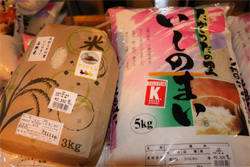
Return to Prefectural Road 5 again and head towards the Saita branch, and at the intersection of the next traffic light, "Takarada Monument" named after Saita became the main Kisaisaida at the Taiyo Festival in 4 (1915). Is standing. Above it is the local guardian Hoko Hachimangu. By the way, it is reported that the place name of Saita used to be a place where rice could not be harvested in the days when all the land was sunny and the rice was not harvested. You. Its history is still handed down and is known as a place where delicious rice is produced, and it is sold under the brand name "Tadada Rice". In addition, rice that is harvested from Ishino land is said to have good taste, and it is named "Ishino Rice" and has been certified as a Sanuki specialty "K brand product". Then, go further on the prefectural road, and head to the roadside station "Takada no Sato Saitama", which also has "Takada rice" and "Ishino rice".
What is a popular product from popular birth?
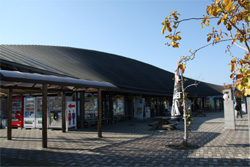
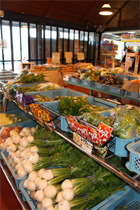
The roadside station "Takara no Sato Sai" is located near the intersection of prefectural road No. 5 and national highway No. 32, and the product building here is a popular birthplace in Kagawa prefecture that competes for one or two. There are parking lots in front of and behind the store, with 104 regular cars and 3 large buses, so it is always full of customers. The stores here are full of fresh vegetables and seasonal fruits, as well as the local specialties and souvenirs. This is fun just to watch, and there are also "Takada no Satokan no Yu", Toju Park and a free park golf course (9 holes) nearby, perfect for families to go out on Sunday. It is an exciting roadside station.
At the popular store, the staff taught me more interesting products. First of all, Yamashita Kaisan Co., Ltd. won the Governor's Award (Grand Prize) at the Prefectural Goods Competition in 22, "Crispy Roasted Iriikoi Various Flavor Select (Plain Flavor, Ichimi, Sansho, Ginseng)". Meat Pier Sanuki's "Sanuki's Gem and Boned Bird" with its unique spicy taste, and Santou's Sekisho and Kushi Land "Sanuki Boned Bird". Another popular product is pickles. In winter, of course, we also recommend winter vegetables and citrus, strawberry, and wild boar meat lined up in stores. Throughout the year, "handmade ice cream" has fans. Afogard with espresso coffee is also attracting attention as adult ice. In December, New Year's items such as shime rope are available, and there is a business day for pork juice in the severe winter. The roadside station “Takada no Sato Sai” where you can see the lineup of Yamamoto and Saita's specialty items introduced so far. It is a direct delivery that is worth visiting even from afar.
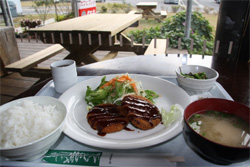
The gourmet spots that support the popularity of this product building are the adjacent “Udon Chaya Sai” (open daily from 10 am to 17 pm) and the “Talking Fireplace Cafe Preto” (same holiday as the product building at 8:1 am) Half to XNUMX o'clock). The photo shows a cafe lunch time lunch. It is a popular lunch for locals using fresh produce.
Healing and vitality hot spring
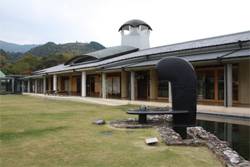
Above Michi-no-Eki, there is Kannoyu, which is very popular with neighbors. The quality of the spring is high in sodium and it is also called "Shiragin-no-yu", and you can enjoy the panorama of Asan Mountains from the bathroom. It is said to be a place where vitality and tenderness are gathered by feng shui, and a sculpture "Nushi" by Shiro Hayami is placed like a guardian deity in the courtyard. After taking a bath, there is also a dining room with plenty of side dishes using local vegetables. There are also saloons, so banquets and dinners from small to large groups are possible. At Yunotanso just below, you can use it for accommodation, training, meetings, etc. by reservation.
It ’s delicious to watch and drink
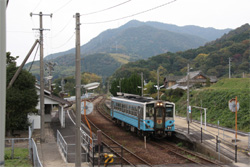
Next, follow National Highway No. 32 toward Kotosquare, turn right from the middle and head for JR Saita Station. There is a giant tub beside the station building at the quiet uninhabited station at the Saita station, and the shade is expanding. Nearby is Okamoto Yaki's "Gallery Toyonaka". Okamoto ware is a pottery that started using the soil of Mitoyo City, which once supplied a large amount of tiles to Fujiwarakyo. It is said that in the 14th century, a naturalizer introduced the technique, and in 1332 the emperor Godaigo's prince improved his pottery techniques. Familiar items such as clay pots, pots and clay pipes are famous, and were sold to various places by peddlers. The ancestor of the gallery, Onishi-san, was also involved in the work of Okamoto ware and grew up surrounded by pottery from a young age. Eventually, they started to have tea at the precincts of Honzan-ji, the 70th temple of Shikoku Sacred Ground, and they also displayed their own works.
Eventually he opened a workshop in collaboration with his potters, but he said he had moved to this area to make a full-fledged work with a climbing kiln. Okamoto-yaki soil contains a lot of iron, so it becomes a soft earth color when unglazed, and becomes a reddish brown like Bizen when baked at high temperatures. The work of Onishi, created under the name of Saburo Yoshikage Shikoku, is a work of art that goes far beyond the world of household appliances and Okamoto ware. It has a unique texture that is as good as Bizen ware. In addition, the baking machine that uses fermented pine as fuel at a high temperature brings out a mellow taste that can not be said. This is obvious when you compare the drinks. You can taste the unknown charm of Okamoto ware.
Midwinter tropical sweets
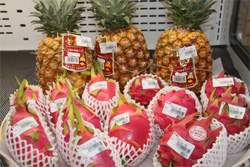
Return to National Highway 32 and follow the Kotosquare. You will see Fruitland Unfarm on the right side of the road. This is a rare tropical fruit shop in Kagawa Prefecture. Tropical fruits grown as a hobby have been fully harvested since 2009, and opened in June of the following year for direct sales. Of course, fruits from outside the prefecture and overseas are lined up, but in the season you can also enjoy ripe mango from your own house. Currently, they are trying to grow mangoes that can be harvested in winter. Assorted fruits and soft serve ice cream for take-out are also popular as gifts. The café next door offers juices and parfaits, and in winter you can also enjoy chocolate fondue and Zenzai Deluxe, as well as a lunch menu.
Packed with seasonal flavors
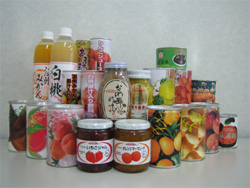
When you head to Kotosquare again on National Route 32, you will see a direct sale of "Sanuki Canned" on your right. Sanuki Canning Co., Ltd. started processing bamboo shoots in 4. Sanuki Canning Co., Ltd. was established in 27. Currently, in addition to the headquarters factory in Saita, there are also factories in Mino, Zentsuji and Akita prefectures. Currently, we sell many canned fruits such as tangerines, apples, peaches, chestnuts, figs, loquats, and pears, as well as canned candies such as strawberry jam, sweet corn, black beans, cooked rice and side dishes. In rare cases, there are also canned bread and inari sushi, but most of them are exported to the United States. The first thing I noticed at the direct sales store was bottling “nameko mushrooms”. If you put the sweet sweet nameko mushroom on hot rice, it will be more exquisite than egg over rice. Also recommended in winter is germinated brown rice amazake. Fermented foods that have attracted attention recently. Because the sprouted brown rice is used in the amazake, it seems to be more and more energetic. And "grape" is also recommended for Osseti cuisine. Among the black beans, even larger ones are glossy. In addition, there were also canned red crimson oranges specially produced by Kagawa and Beni Ohara. At the direct sales shop, there are also good deals and you can make reasonable shopping. Because it is canned and bottled, it was a "Saiki Canned" direct sales place where you would want to stock up. Please use it for disaster prevention and gifts!
I want to pursue good handmade!
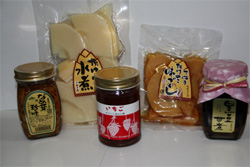
There is "Seki Foods" on the left side of Kotohira on Route 32. He started making canned foods in 6 and started as a limited company in 9. It is a food factory that has taken advantage of the goodness of handmade, sticking to domestic materials. Originally, Shida was a production center of bamboo shoots. “Seki Foods” focuses on local bamboo shoots and sells “boiled bamboo shoots” and “bamboo shoots flavored with soy sauce and mirin”. "Take mushroom flavored dish" is also recommended for tempura. What is made with the enokitake from Shida is "nameko mushroom delicacy". As it is harvested and cooked immediately, its fresh texture is very popular. It goes well with Sanuki udon and appears on the menu of popular udon shops in Zentsuji. In addition, luxury products containing pine mushrooms and bamboo shoots are also appreciated as gifts. Kuro Bean Kanni is a health food made from Kagawa Prefecture that is made from black beans (Tamba seeds) using professional techniques. "Strawberry jam" made from Miki-cho's strawberry (strawberry in the forest) leaves the original preservative style. Even with ice cream and yogurt, you can still enjoy plenty of strawberry flavor. Mr. Hideshige Seki, the second generation president, graduated from fourth-year college and went to Toyo Shokuhin Junior College to learn thoroughly about processed foods. "We want local farmers to be pleased with the ingredients and manufacturing methods, and we want to pursue a world of flavors that respects Kagawa Prefecture." In the future, you want to consider developing it as a material for sweets. Again, there was a world of Kagawa's specialty.
Why don't you go out to Mitoyo city, Yamamoto and Shida area with good taste, good people and good view this winter. It will be warm and warm from the people and tastes that you will never forget, and your heart.
















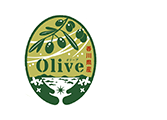 Olive products from Kagawa Prefecture
Olive products from Kagawa Prefecture

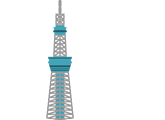
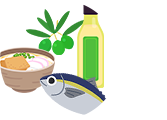
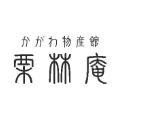
 Stores handling olive-related products
Stores handling olive-related products
